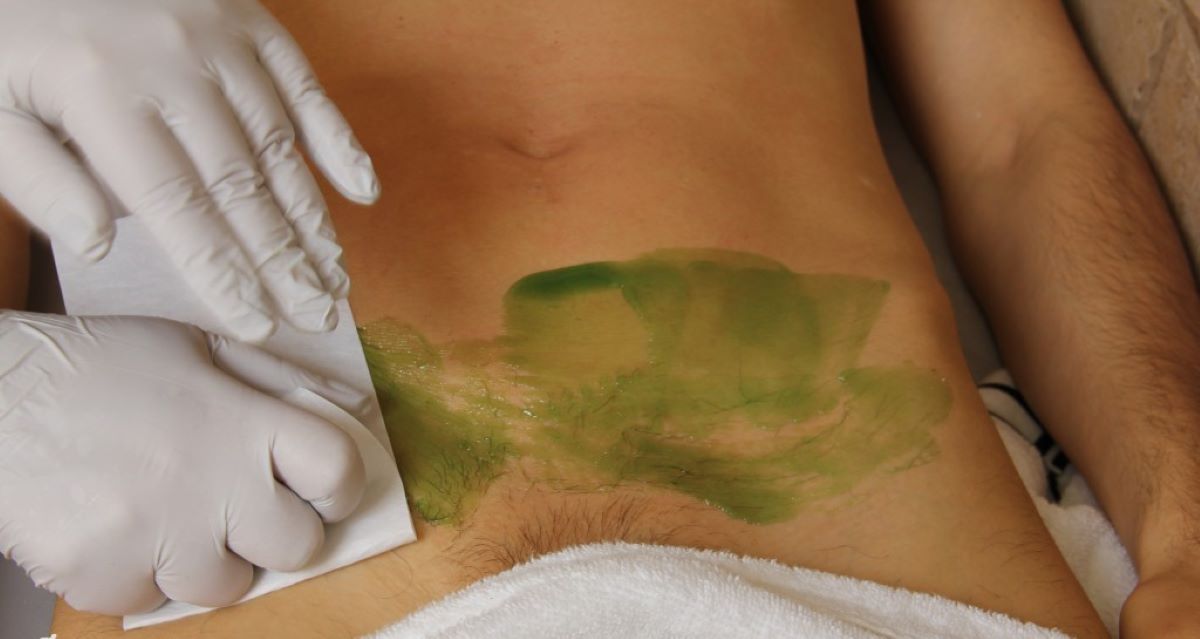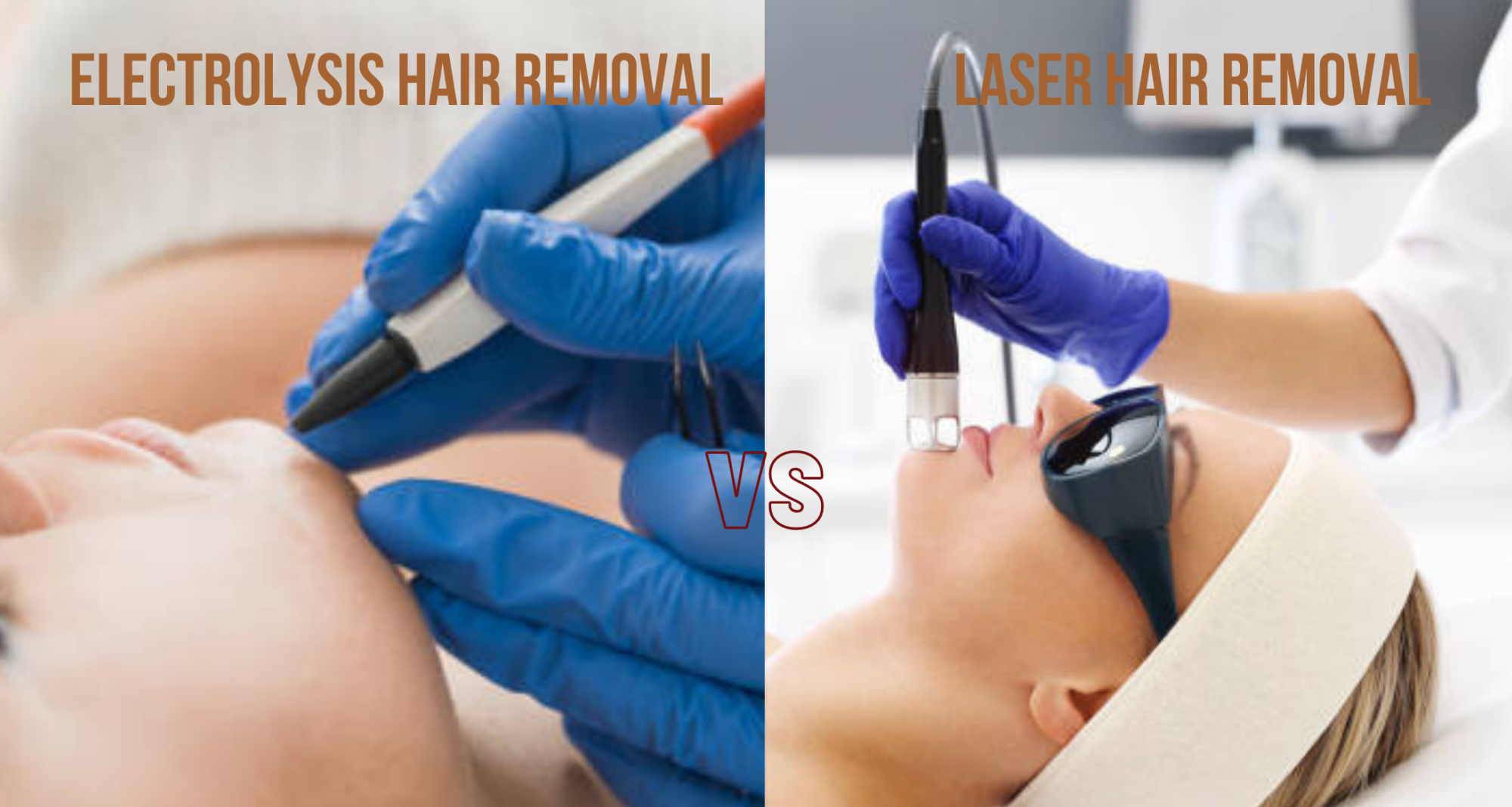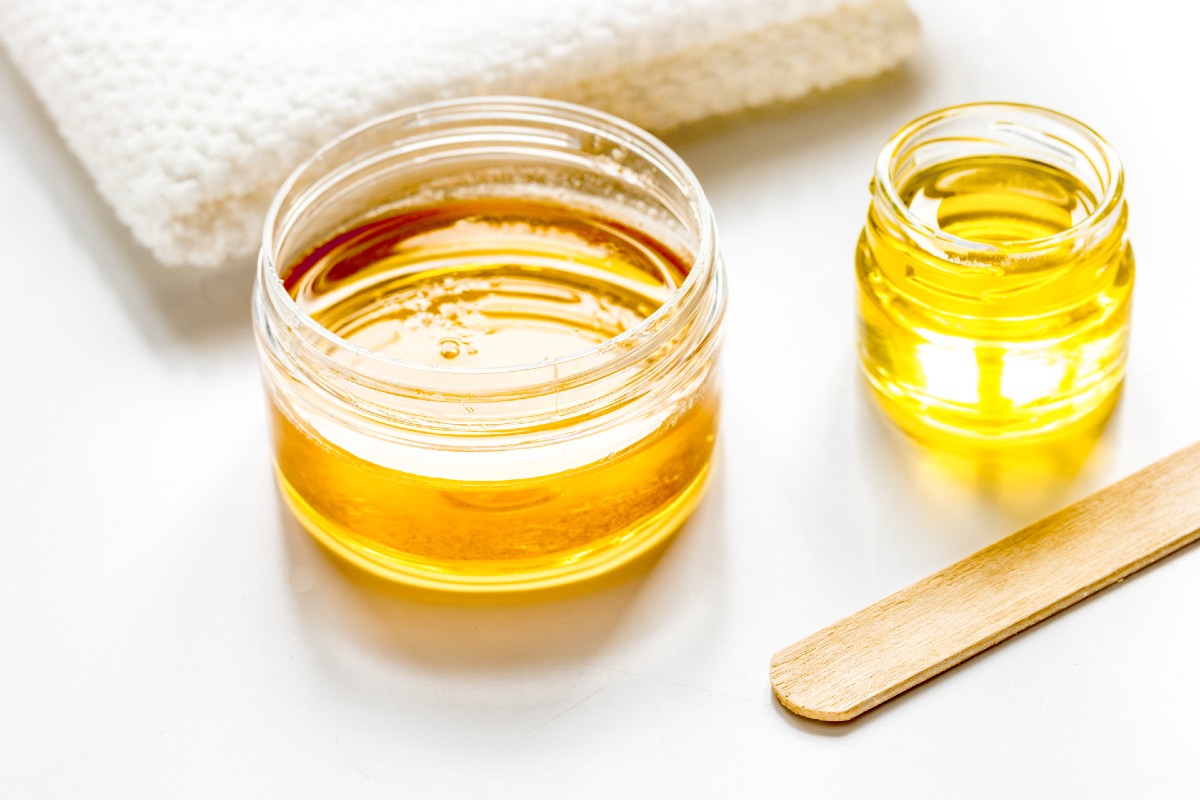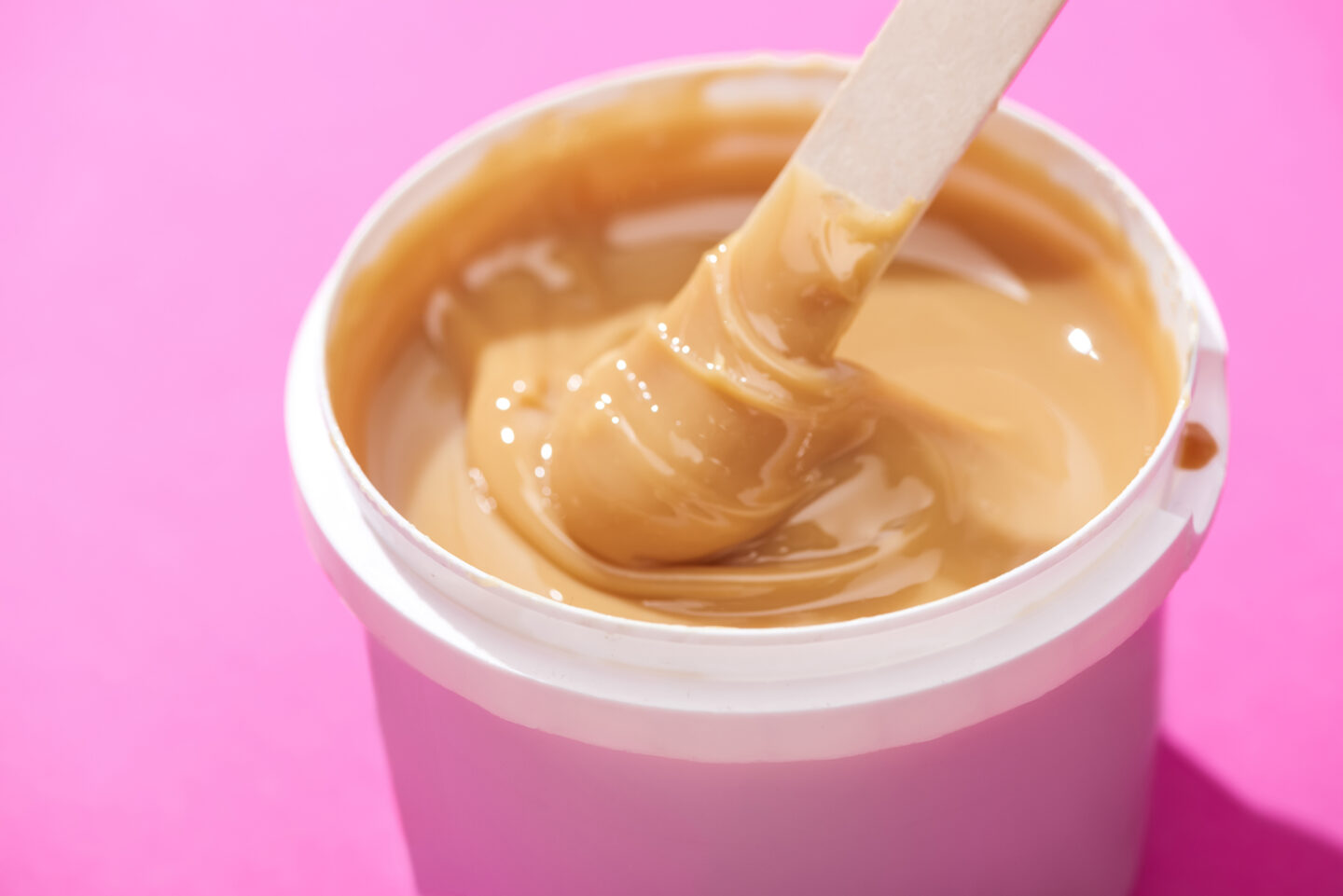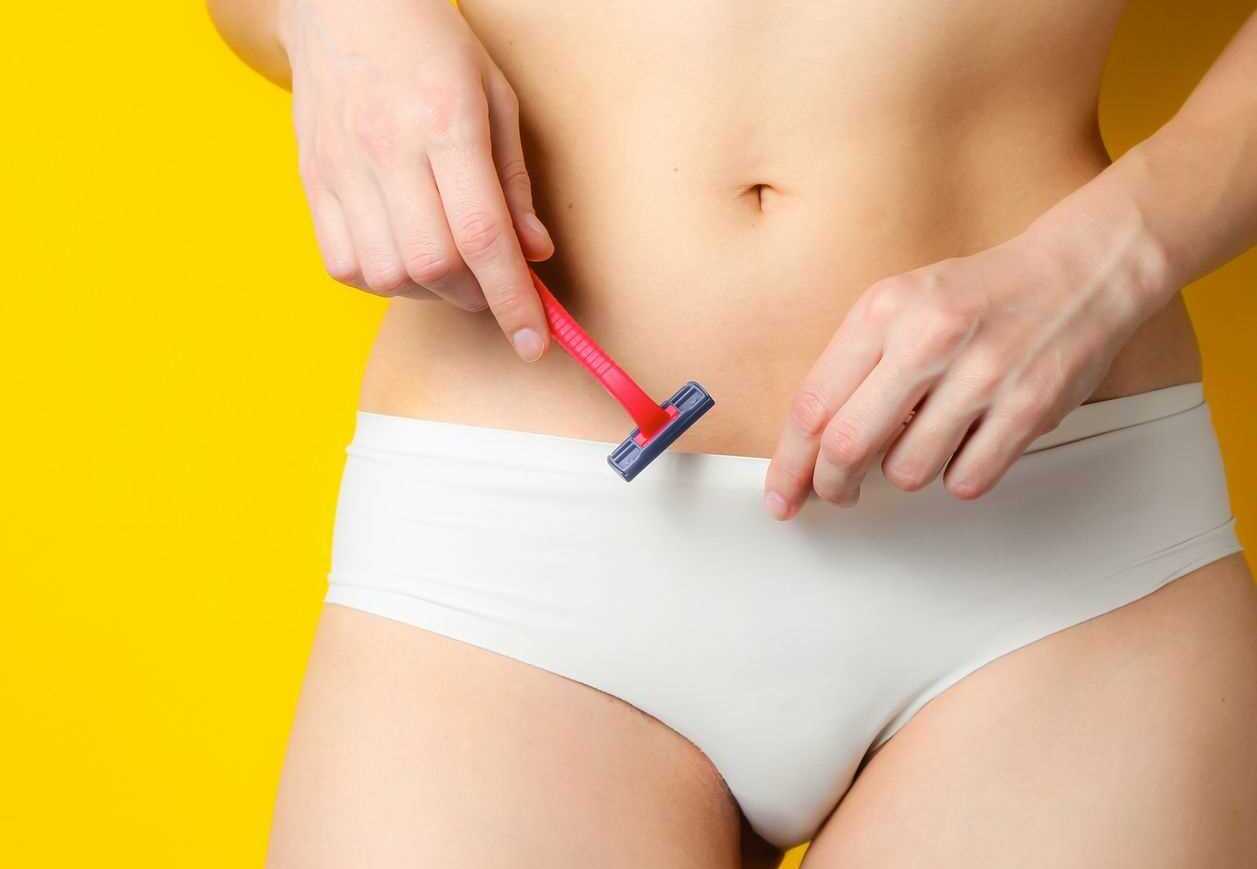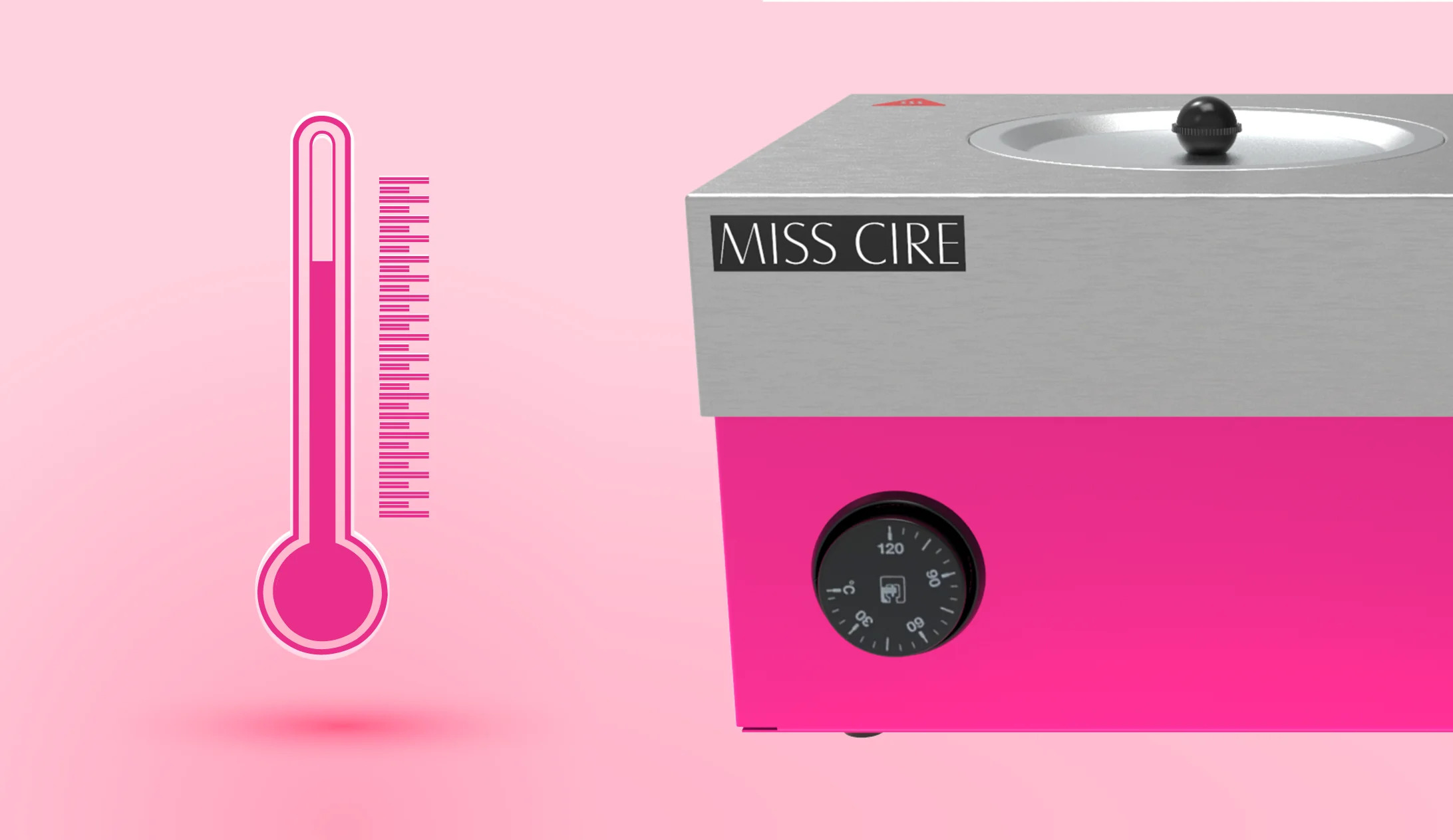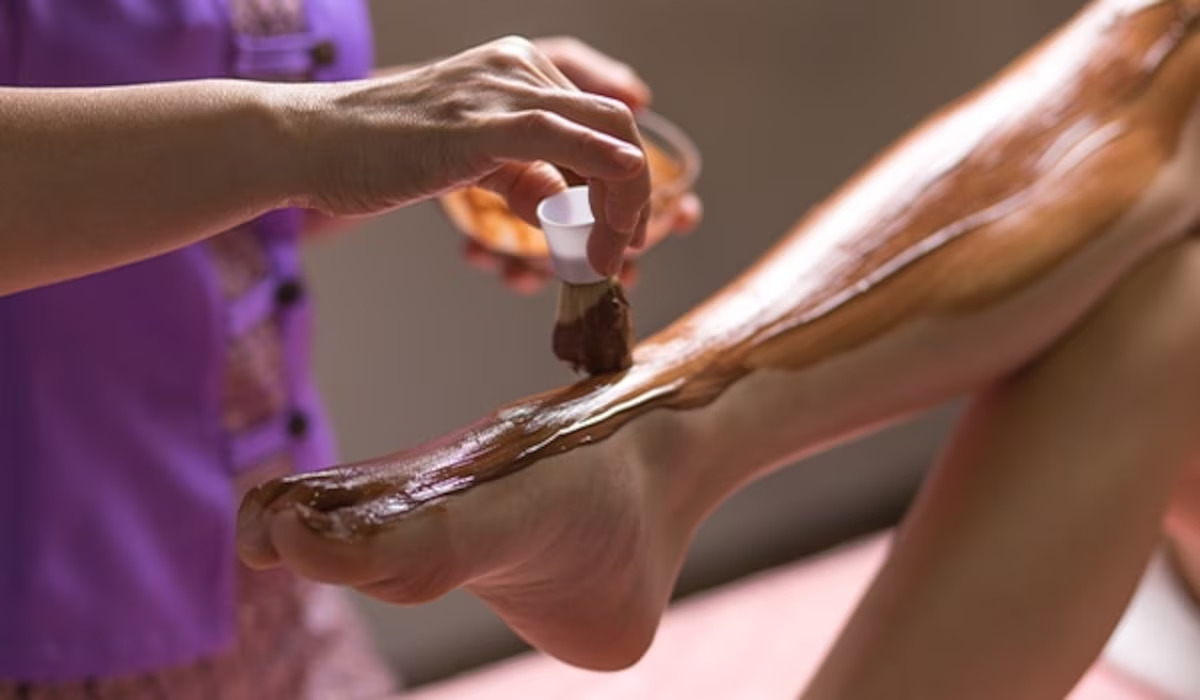Home>Women's Underwear>Bikinis>What Is The Difference Between A Brazilian Wax And A Bikini Wax


Bikinis
What Is The Difference Between A Brazilian Wax And A Bikini Wax
Modified: September 23, 2023
Learn the key distinctions between a Brazilian wax and a bikini wax. Find out what sets them apart and choose the right option for your bikini line.
(Many of the links in this article redirect to a specific reviewed product. Your purchase of these products through affiliate links helps to generate commission for Under-tec.com, at no extra cost. Learn more)
Table of Contents
- Introduction
- Definition of Brazilian Wax
- Definition of Bikini Wax
- Techniques and Methods Used in Brazilian Wax
- Techniques and Methods Used in Bikini Wax
- Hair Removal Coverage in Brazilian Wax
- Hair Removal Coverage in Bikini Wax
- Pain Level in Brazilian Wax
- Pain Level in Bikini Wax
- Duration and Maintenance of Brazilian Wax
- Duration and Maintenance of Bikini Wax
- Which is Better: Brazilian Wax or Bikini Wax?
- Conclusion
Introduction
When it comes to hair removal in the bikini area, there are two popular options: the Brazilian wax and the bikini wax. While they both aim to remove unwanted hair from the bikini line, there are some key differences between the two techniques. Understanding these differences can help you make an informed decision about which waxing method is right for you.
The Brazilian wax is known for its thorough hair removal, leaving the bikini area completely hairless. It involves the removal of hair from the front, back, and everything in between. On the other hand, the bikini wax focuses on removing hair only from the sides and top of the bikini line, leaving some hair intact. The amount of hair removed and the coverage area are the main factors that distinguish these two types of waxing.
Brazilian waxing has gained immense popularity in recent years due to its ability to provide a clean and smooth bikini area. It offers a longer-lasting result compared to other hair removal methods, such as shaving or using depilatory creams. However, it should be noted that Brazilian waxing requires more skill and expertise from the esthetician, as it involves working with sensitive areas of the body.
Definition of Brazilian Wax
A Brazilian wax is a hair removal technique that involves the complete removal of pubic hair in the bikini area, including the front, back, and everything in between. It originated in Brazil and quickly gained popularity worldwide for its ability to provide a smooth and hair-free bikini area.
During a Brazilian wax, a trained esthetician will apply hot or warm wax to the desired areas of the bikini region. The wax adheres to the hair, allowing the esthetician to swiftly remove it from the roots using a quick pulling motion. This results in a longer-lasting hair-free appearance compared to other methods of hair removal, such as shaving or using depilatory creams.
The Brazilian waxing technique typically involves the use of either hard wax or soft wax. Hard wax is applied in a thicker layer and is suitable for sensitive areas of the body. It hardens on its own and can be removed without the use of a cloth strip. Soft wax, on the other hand, is applied in a thin layer and requires a cloth strip for removal. The esthetician will determine the best type of wax to use based on your skin sensitivity and personal preference.
It’s important to note that Brazilian waxing leaves the skin feeling smooth and hair-free for an extended period of time, typically ranging from three to six weeks. The regrowth after a Brazilian wax is usually finer and softer, making it less noticeable and easier to manage between treatments.
Definition of Bikini Wax
A bikini wax is a hair removal technique that focuses on removing hair from the sides and top of the bikini area, while leaving some hair intact. It is a less extensive form of hair removal compared to the Brazilian wax, making it a popular choice for those who prefer to maintain some amount of hair in the bikini region.
During a bikini wax, an esthetician will apply hot or warm wax to the desired areas outside the bikini line. The wax adheres to the hair, allowing the esthetician to remove it from the roots with a quick pulling motion. Unlike the Brazilian wax, the bikini wax does not involve the complete removal of hair from the entire bikini region.
Similar to Brazilian waxing, there are different types of wax that can be used for a bikini wax. Estheticians may opt for either hard wax or soft wax, depending on individual preferences and skin sensitivity. Hard wax is typically used for more sensitive areas, as it adheres to the hair and not the skin, resulting in less discomfort during the hair removal process. Soft wax, requiring the use of a cloth strip, is commonly used for larger areas and is effective for removing shorter hairs.
Bikini waxing is a popular choice for those who want a clean and well-groomed bikini area while still retaining some hair. It provides a neater appearance and the removal of hair along the bikini line, preventing any hair from peeking out of a swimsuit or underwear.
The regrowth after a bikini wax is similar to that of a Brazilian wax, with hair appearing finer and softer than before. However, since not all the hair is removed, the regrowth may be more noticeable, requiring more frequent touch-ups to maintain the desired appearance. The duration of a bikini wax varies from person to person, but it generally lasts around two to four weeks before regrowth becomes more noticeable.
Techniques and Methods Used in Brazilian Wax
There are several techniques and methods used in Brazilian waxing to ensure a thorough and effective hair removal process. These techniques may vary slightly depending on the esthetician and salon, but the overall goal remains the same: to remove all the hair from the front, back, and everything in between the bikini area.
1. Preparation: Before the waxing treatment begins, the esthetician will cleanse the area to be treated and may apply a pre-wax oil or powder to ensure the wax adheres to the hair rather than the skin. This helps to minimize discomfort and reduce the risk of irritation.
2. Wax application: The esthetician will apply hot or warm wax to small sections of the bikini area using a spatula or roller. The wax is spread in the direction of hair growth, ensuring full coverage of the desired areas.
3. Wax removal: Once the wax has cooled and adhered to the hair, the esthetician will quickly remove it in the opposite direction of hair growth. This technique helps to minimize discomfort and ensures the hair is removed from the roots.
4. Tweezing: After the majority of the hair has been removed with wax, the esthetician may use tweezers to pluck any remaining stray hairs or to shape the eyebrows, if desired.
5. Soothing and post-treatment: To soothe the freshly waxed skin, the esthetician may apply a cooling gel or lotion to reduce redness and inflammation. They may also offer advice on post-waxing care, such as avoiding hot baths, swimming pools, and exfoliating the area for a few days.
It’s worth noting that some estheticians may use different variations of these techniques or incorporate additional steps based on their training and expertise. Additionally, there are different types of wax that may be used, such as hard wax or soft wax, depending on the preference and sensitivity of the client.
Techniques and Methods Used in Bikini Wax
Bikini waxing involves specific techniques and methods designed to remove hair from the sides and top of the bikini area, while leaving some hair intact. While the techniques used in bikini waxing may differ slightly between estheticians and salons, the overall goal remains the same: to provide a clean and well-groomed appearance to the bikini line.
1. Preparation: Before starting the waxing process, the esthetician will cleanse the area to be treated and may apply a pre-wax oil or powder. This helps to ensure the wax adheres to the hair rather than the skin, reducing the risk of irritation and discomfort during the hair removal process.
2. Wax application: The esthetician will apply hot or warm wax to the desired areas outside the bikini line. The wax is typically spread in the direction of hair growth using a spatula or roller, ensuring complete coverage of the hair to be removed.
3. Wax removal: Once the wax has cooled and adhered to the hair, the esthetician will swiftly remove it in the opposite direction of hair growth. This technique helps to minimize discomfort and ensures that the hair is removed from the roots, providing a longer-lasting result.
4. Tweezing and trimming: To further refine the bikini area, the esthetician may use tweezers to pluck any stray hairs that were missed during the waxing process. They may also trim any longer hairs to achieve a more uniform length.
5. Soothing and aftercare: After the waxing treatment, the esthetician may apply a cooling gel or lotion to soothe the skin and reduce any redness or inflammation. They may also provide aftercare instructions, such as avoiding excessive heat, tight clothing, and exfoliating the area for a few days to prevent irritation.
It’s important to note that the techniques used in bikini waxing may vary slightly depending on the esthetician and the preference of the client. Some estheticians may offer different variations of these techniques, while others may incorporate additional steps based on their expertise and the specific needs of the client.
Hair Removal Coverage in Brazilian Wax
One of the main distinctions between a Brazilian wax and a bikini wax is the extent of hair removal coverage. In a Brazilian wax, the goal is to remove all the hair from the front, back, and everything in between the bikini area. This comprehensive hair removal method leaves the entire bikini region completely hair-free.
During a Brazilian wax, an esthetician will remove hair from the pubic mound, labia, perianal area, and the area in between the buttocks. This thorough coverage ensures a smooth and clean appearance, which is ideal for those who prefer a hairless bikini area and want to enjoy the freedom of wearing various swimsuit styles.
The hair removal process in a Brazilian wax involves the use of hot or warm wax, which is applied and removed in small sections. This allows the esthetician to effectively target all areas and ensure all hair is removed from the roots. The result is a hairless bikini area that can last for several weeks before regrowth becomes noticeable.
It’s important to communicate your preferences and desired level of hair removal with your esthetician before undergoing a Brazilian wax. They can tailor the treatment to your specific needs, such as leaving a small strip or triangle of hair if desired. This customization ensures that you are comfortable with the level of hair removal and that the end result aligns with your personal preferences.
It’s worth noting that the hair removal coverage in a Brazilian wax may vary slightly depending on personal preferences, cultural norms, or salon offerings. Some individuals may opt for variations of the Brazilian wax, such as the landing strip or the Hollywood wax, which involve leaving a narrow strip of hair or complete hair removal, respectively. Ultimately, the level of hair removal coverage in a Brazilian wax can be adjusted to best suit your preferences and comfort level.
Hair Removal Coverage in Bikini Wax
Unlike a Brazilian wax that aims to remove all the hair from the entire bikini area, a bikini wax focuses on hair removal from the sides and top of the bikini line while leaving some hair intact. This allows for a more modest look while still providing a clean and well-groomed appearance.
During a bikini wax, the esthetician will remove hair from the areas outside the bikini line, typically targeting the hair that would be visible when wearing a bikini or underwear. The exact coverage area may vary from person to person, depending on their preference and desired level of hair removal.
The purpose of a bikini wax is to provide a neater appearance to the bikini line and prevent any hair from peeking out while wearing swimwear or lingerie. It helps to create a smooth transition from the bikini area to the surrounding skin, enhancing the overall aesthetic appeal.
The hair removal process in a bikini wax involves the use of hot or warm wax, which is applied and removed in small sections. The esthetician will focus on removing hair from the sides and top of the bikini line to provide an even and well-defined border.
It’s important to communicate your preferences and desired level of hair removal with the esthetician before undergoing a bikini wax. They can customize the treatment to suit your needs, whether you prefer a narrower or wider bikini line or want to leave a particular shape or amount of hair in the area.
It’s worth noting that the hair removal coverage in a bikini wax can vary based on personal preferences and cultural norms. Some individuals may opt for more extensive hair removal, such as a high bikini wax or extended bikini wax, which removes more hair beyond the traditional bikini line. Ultimately, the level of hair removal coverage in a bikini wax can be adjusted to meet your specific preferences and comfort level.
Pain Level in Brazilian Wax
The pain level experienced during a Brazilian wax can vary from person to person depending on individual pain tolerance, sensitivity of the skin, and previous waxing experiences. While some may find it uncomfortable or slightly painful, others may experience minimal discomfort or even find it relatively painless.
During a Brazilian wax, the esthetician applies hot or warm wax to the desired areas and then swiftly removes the wax, along with the hair, in the opposite direction of hair growth. The sensation of wax being applied and removed can cause a brief stinging or pulling sensation, which some may find uncomfortable.
However, there are a few factors that can help minimize the pain during a Brazilian wax:
1. Professional and skilled esthetician: Choosing a reputable salon and an experienced esthetician who specializes in Brazilian waxing can make a significant difference in the overall experience. A skilled esthetician knows how to minimize discomfort, perform the waxing technique efficiently, and create a more positive and comfortable experience.
2. Proper preparation and aftercare: Ensuring that the skin is properly prepped before the waxing treatment, such as exfoliating and moisturizing, can help reduce pain during the process. Additionally, following the recommended aftercare instructions, such as avoiding excessive heat or tight clothing, can help minimize any post-waxing discomfort or irritation.
3. Breathing exercises and relaxation techniques: Taking slow, deep breaths during the waxing process can help relax the body and distract from any momentary discomfort. Some estheticians may also incorporate soothing techniques, such as applying a cooling gel or using a gentle touch, to help alleviate any discomfort.
It’s important to communicate with your esthetician during the waxing session. They can adjust their technique or make accommodations based on your feedback and comfort level. Open communication and trust with your esthetician can help ensure a more positive and comfortable experience.
Overall, while there may be some level of discomfort or pain associated with a Brazilian wax, it is typically manageable and temporary. Many individuals find that the long-lasting smooth results outweigh any brief discomfort they may experience during the process.
Pain Level in Bikini Wax
The pain experienced during a bikini wax can vary depending on an individual’s pain tolerance, sensitivity of the skin, and personal waxing experiences. While some may find it uncomfortable or slightly painful, others may experience minimal discomfort or even find it relatively painless.
During a bikini wax, the esthetician applies hot or warm wax to the desired areas outside the bikini line and then swiftly removes the wax, along with the hair, in the opposite direction of hair growth. This process can cause a brief stinging or pulling sensation, which some individuals may find uncomfortable.
However, there are several factors that can help minimize the pain during a bikini wax:
1. Professional and experienced esthetician: Choosing a skilled esthetician who is experienced in performing bikini waxes can greatly impact the pain level. A knowledgeable esthetician will use proper techniques and have a gentle touch, minimizing potential discomfort during the process.
2. Skin preparation and aftercare: Properly preparing the skin before the waxing treatment, such as exfoliating and moisturizing, can help reduce pain during the process. Following recommended aftercare instructions, such as avoiding hot baths or harsh chemicals, can also minimize post-waxing discomfort and irritation.
3. Relaxation techniques: Taking slow, deep breaths and practicing relaxation techniques during the waxing session can help ease any discomfort. Distraction techniques, such as listening to calming music or engaging in light conversation with the esthetician, can also help divert attention from the momentary pain.
Communicating openly with your esthetician is crucial during a bikini waxing session. If you are experiencing excessive pain or discomfort, informing your esthetician will allow them to make any necessary adjustments, such as changing the waxing technique or using a different type of wax.
It’s worth noting that the level of pain experienced during a bikini wax is usually short-lived. The results, which include a clean and well-groomed bikini line, often outweigh any temporary discomfort. Many people find that any initial discomfort is quickly forgotten once they see the smooth and neat appearance achieved through the waxing process.
Duration and Maintenance of Brazilian Wax
The duration of a Brazilian wax can vary from person to person, but on average, it can last between three to six weeks before regrowth becomes noticeable. The long-lasting results of a Brazilian wax make it a popular choice for those seeking a hair-free bikini area for an extended period of time.
Proper maintenance is essential to maximize the duration of the Brazilian wax. Here are some tips for maintaining the results:
1. Avoid shaving: Shaving between waxing appointments can disrupt the hair growth cycle, resulting in uneven regrowth. It’s important to refrain from shaving to allow the hair to grow back evenly and in the same cycle.
2. Exfoliate regularly: Gently exfoliating the skin with a scrub or exfoliating glove two to three times a week can help prevent ingrown hairs and keep the skin smooth. Remember to avoid exfoliating for at least 24 hours after a Brazilian wax to prevent irritation.
3. Moisturize daily: Applying a moisturizer to the bikini area daily helps keep the skin hydrated and prevents dryness. Opt for a gentle, fragrance-free moisturizer to minimize potential irritation.
4. Avoid prolonged exposure to heat: Avoid hot baths, saunas, and hot tubs for the first 24 to 48 hours after a Brazilian wax. Heat can irritate the freshly waxed skin and lead to redness or discomfort.
5. Schedule regular waxing appointments: To maintain the desired hair-free results, it’s recommended to schedule regular Brazilian waxing appointments every three to six weeks. This helps to ensure that the hair is consistently removed from the roots and reduces the chances of ingrown hairs.
Remember, the regrowth after a Brazilian wax is usually finer and softer, making it less noticeable than with other hair removal methods. The more consistent you are with your waxing appointments and maintenance routine, the better the results will be in terms of hair growth and smoothness.
It’s important to keep in mind that individual hair growth rates and factors such as hormones and genetics can affect the duration of a Brazilian wax. Working closely with a skilled esthetician who specializes in Brazilian waxing can provide personalized advice and recommendations for maintaining the best results based on your unique needs and hair growth patterns.
Duration and Maintenance of Bikini Wax
The duration of a bikini wax can vary from person to person, but on average, it can last between two to four weeks before regrowth becomes noticeable. It’s important to understand that the duration of the results can depend on various factors, including individual hair growth rate, hair texture, and other personal factors.
Maintaining the results of a bikini wax requires some regular maintenance. Here are some tips to help you maximize the duration of your bikini wax:
1. Avoid shaving: It’s recommended to avoid shaving between waxing appointments. Shaving can disrupt the hair growth cycle and lead to uneven regrowth. To maintain a consistent and smoother appearance, allow the hair to grow out before your next bikini waxing session.
2. Exfoliate gently: Regular exfoliation is important for preventing ingrown hairs and maintaining smooth skin. However, it’s important to use a gentle exfoliating product or brush to avoid irritation. Exfoliate the bikini area two to three times a week, being careful not to overdo it.
3. Moisturize regularly: Keep the skin moisturized to prevent dryness and maintain its smoothness. Choose a gentle, non-fragrant moisturizer and apply it daily to the bikini area.
4. Avoid prolonged exposure to heat: For the first 24 to 48 hours after a bikini wax, it’s best to avoid activities that can expose the freshly waxed skin to excessive heat, such as hot baths, saunas, or tanning beds. Heat can cause irritation and redness.
5. Schedule regular waxing appointments: To maintain a well-groomed bikini area, it’s recommended to schedule regular bikini waxing appointments every two to four weeks. Consistent waxing helps keep the hair growth in check and reduces the chances of ingrown hairs.
It’s important to note that the regrowth after a bikini wax is usually softer and finer than with other hair removal methods. This lessens the visibility of regrowth and allows for a smoother appearance between waxing sessions. However, individual hair growth patterns and factors such as hormones and genetics can influence the rate and texture of hair regrowth.
Working with a skilled esthetician who specializes in bikini waxing can provide personalized advice and assistance in maintaining the best results based on your individual needs and preferences. They can guide you on the appropriate duration between waxing appointments and recommend the most effective maintenance routine for your bikini area.
Which is Better: Brazilian Wax or Bikini Wax?
Deciding which waxing method is better, whether a Brazilian wax or a bikini wax, ultimately depends on personal preferences and individual needs. Both techniques offer their own set of advantages and cater to different desired levels of hair removal.
A Brazilian wax is a comprehensive hair removal method that removes all the hair from the front, back, and everything in between the bikini area. It offers a completely hair-free result, providing a smooth and clean appearance to the entire bikini region. This makes it a popular choice for those who prefer a hairless look and want to feel confident in various swimwear styles. The long-lasting results of a Brazilian wax, typically lasting between three to six weeks, also appeal to those seeking a low-maintenance option.
On the other hand, a bikini wax focuses on removing hair from the sides and top of the bikini line, while leaving some hair intact. This technique provides a neater appearance and prevents any unwanted hair from peeking out of bathing suits or undergarments. A bikini wax is a more modest option, allowing individuals to maintain a level of hair they are comfortable with, while still achieving a well-groomed appearance. The duration of a bikini wax typically ranges from two to four weeks before regrowth becomes noticeable.
The choice between a Brazilian wax and a bikini wax depends on various factors, including personal style, comfort level, and desired level of hair removal. Consider the following factors when making a decision:
1. Hair removal preference: Determine whether you prefer a completely hair-free look (Brazilian wax) or if you are comfortable with some hair remaining (bikini wax).
2. Lifestyle and swimwear choices: Consider your lifestyle and the types of swimwear or clothing you typically wear. If you frequently engage in activities that expose the bikini area or prefer more revealing swimwear styles, a Brazilian wax may be a better fit.
3. Pain tolerance: Although both waxing techniques can cause some level of discomfort, consider your pain tolerance and whether you are willing to endure potential temporary discomfort for longer-lasting results.
4. Maintenance and regrowth: Think about how often you are willing to schedule maintenance appointments. A Brazilian wax typically has a longer regrowth period, requiring fewer appointments compared to a bikini wax.
Ultimately, the choice between a Brazilian wax and a bikini wax is a personal one. It’s important to communicate your preferences and desired level of hair removal with your esthetician, who can provide guidance and help you select the waxing method that best suits your individual needs and comfort level.
Conclusion
Choosing between a Brazilian wax and a bikini wax depends on individual preferences, desired hair removal coverage, and personal comfort levels. Both techniques offer their own unique benefits and cater to different levels of hair removal.
A Brazilian wax involves the complete removal of hair from the front, back, and everything in between the bikini area, providing a smooth and hair-free result. It is the preferred choice for those who want a completely hairless look and longer-lasting results.
On the other hand, a bikini wax focuses on removing hair from the sides and top of the bikini line while leaving some hair intact. This option offers a neater appearance and is ideal for those who wish to maintain a certain level of hair and prefer a more modest approach.
When considering which waxing method is better, it is important to consider factors such as hair removal preference, lifestyle, pain tolerance, and maintenance requirements. Personal style, comfort level, and desired level of hair removal are all important considerations in making a decision.
Regardless of whether you choose a Brazilian wax or a bikini wax, it is crucial to consult with a professional esthetician who specializes in waxing. They can provide guidance, tailor the treatment to your preferences, and ensure a hygienic and safe waxing experience.
Remember, the duration of the results and level of pain experienced during either waxing method can vary among individuals. Proper aftercare, regular maintenance appointments, and communication with your esthetician are key in maintaining the best results.
The most important aspect is to make a choice that aligns with your personal preferences and provides you with the level of comfort and confidence you desire when it comes to hair removal in the bikini area.

